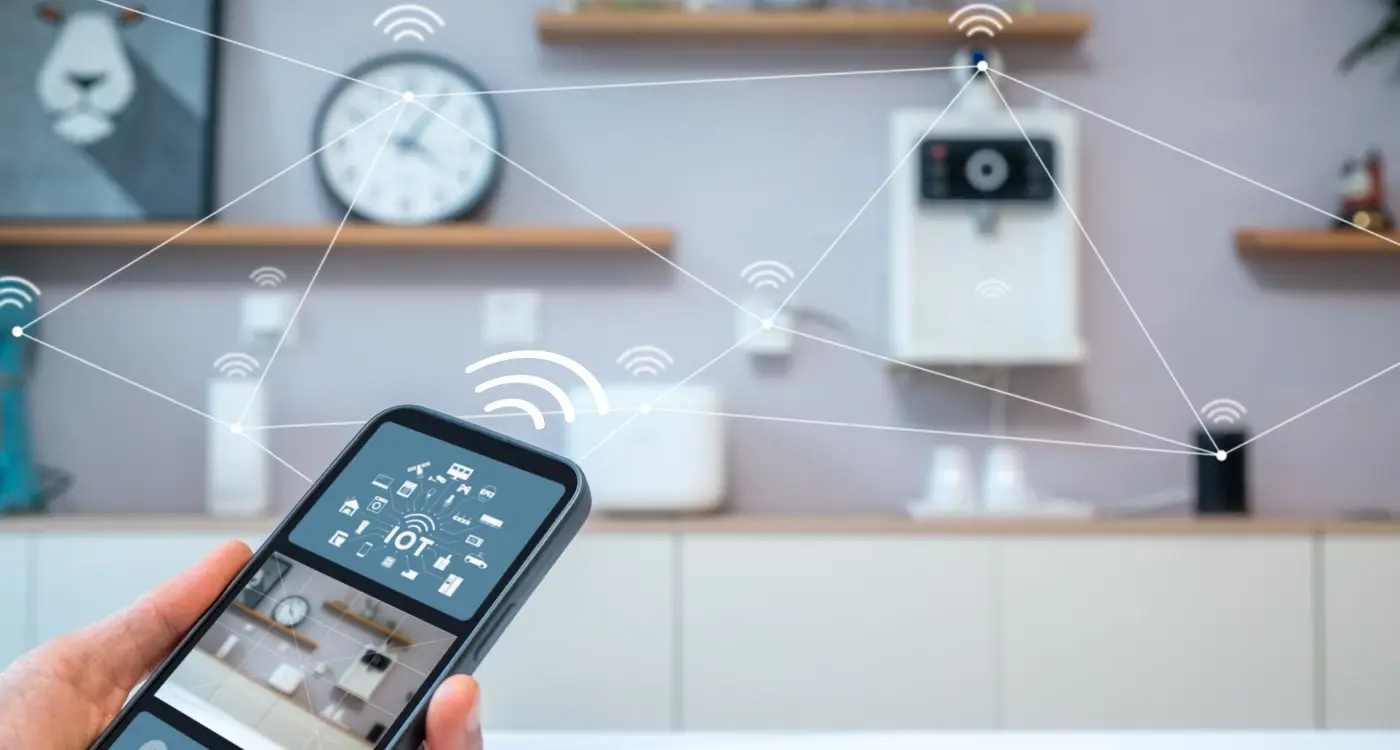Which Encryption Methods Work Best for IoT App Integration?
The Internet of Things has transformed how we build mobile applications, but it's also created some serious security headaches. When your app needs to communicate with smart thermostats, fitness trackers, or industrial sensors, you're dealing with a web of connected devices that hackers would love to exploit. The challenge isn't just protecting one app—it's securing the entire chain of communication between your mobile application and potentially dozens of IoT devices.
Most developers I work with understand basic app security, but IoT encryption is a different beast altogether. You're not just encrypting data stored on a phone; you're protecting information as it travels between devices with varying processing power, battery life, and security capabilities. Some IoT devices can barely handle basic encryption, whilst others can run sophisticated security protocols without breaking a sweat.
The weakest link in any IoT system is rarely the mobile app itself—it's usually the communication between devices where things go wrong
This guide will walk you through the encryption methods that actually work in real-world IoT app integration scenarios. We'll cover everything from choosing between symmetric and asymmetric encryption to handling the unique challenges that come with mobile IoT implementations. By the end, you'll know exactly which security approaches fit your specific use case.
Understanding IoT Encryption Basics
IoT encryption is like having a secret code that protects information when devices talk to each other. When your smart thermostat sends temperature data to your mobile app, encryption scrambles that information so nobody else can read it—even if they intercept the message.
What Makes IoT Different
Regular computers have plenty of processing power and memory to handle complex security measures. IoT devices? Not so much. Your smart doorbell or fitness tracker runs on tiny processors with limited battery life, which means we can't just copy-paste security methods from desktop computers.
This creates an interesting challenge. We need strong encryption to protect sensitive data, but we also need it to work on devices that might have less computing power than a basic calculator from the 1990s.
The Basic Process
Encryption works by taking readable information (like "door is unlocked") and transforming it into scrambled text using mathematical algorithms. The receiving device—your mobile app, for example—uses a special key to unscramble the message back into readable form.
The tricky bit is making sure only authorised devices have the right keys, whilst keeping the whole process fast enough that your smart home doesn't feel sluggish when you're trying to turn off the lights.
Symmetric vs Asymmetric Encryption Methods
When building IoT apps, you'll encounter two main types of encryption that protect your data—symmetric and asymmetric. Think of symmetric encryption as a shared secret between devices; both the sender and receiver use the same key to lock and unlock messages. It's fast and efficient, which makes it perfect for IoT devices that need to process lots of data quickly without draining their batteries.
Asymmetric encryption works differently—it uses a pair of keys, one public and one private. The public key can be shared openly whilst the private key stays secret. This approach is more secure for initial connections but requires more processing power, which can be a problem for smaller IoT devices with limited resources.
Choosing the Right Method for Your App
Most successful IoT app integrations use both methods together. Asymmetric encryption handles the initial handshake and key exchange, then switches to symmetric encryption for ongoing data transmission. This hybrid approach gives you the security benefits of asymmetric encryption without the performance penalties.
Use AES-256 for symmetric encryption in your IoT apps—it's widely supported, secure, and performs well on most devices whilst maintaining strong mobile encryption standards.
The key is matching your encryption choice to your device capabilities and security requirements. Battery-powered sensors might favour lightweight symmetric methods, whilst gateway devices can handle more complex asymmetric operations.
Transport Layer Security for IoT Apps
Transport Layer Security—or TLS as most people call it—is the backbone of secure communication between IoT devices and mobile apps. Think of it as a protective tunnel that wraps around your data whilst it travels across the internet. Without it, your smart doorbell's video feed or your fitness tracker's health data would be completely exposed to anyone listening in.
TLS works by creating an encrypted connection before any actual data gets sent. The IoT device and your mobile app shake hands digitally, agree on encryption methods, and exchange keys. This handshake process happens automatically, but it's doing some heavy lifting behind the scenes—verifying identities, selecting cipher suites, and establishing session keys.
Version Matters More Than You'd Think
Here's where things get tricky for IoT developers. Many IoT devices run on limited hardware with tiny processors and minimal memory. TLS 1.3 offers the best security, but older devices might struggle with the computational requirements. You'll often find yourself balancing security with performance; TLS 1.2 might be your compromise solution for resource-constrained devices.
Certificate Management Headaches
Managing TLS certificates across hundreds or thousands of IoT devices isn't straightforward. Certificates expire, need updating, and require proper validation chains. Your mobile app needs to handle certificate pinning carefully—too strict and legitimate connections fail, too loose and security suffers. Many developers opt for automated certificate management systems, but that adds another layer of complexity to your infrastructure.
Device Authentication and Key Management
When I'm working on IoT app integration projects, device authentication always comes up as one of the trickiest parts to get right. You've got potentially thousands of devices trying to connect to your mobile app—and each one needs to prove it's legitimate before you let it through the door. It's not like web authentication where you're dealing with humans typing passwords; these devices need to authenticate automatically without any user intervention.
Certificate-Based Authentication
The gold standard for IoT device authentication is using digital certificates. Each device gets its own unique certificate during manufacturing, which acts like a digital passport. When your mobile app tries to connect to a device, they exchange certificates to verify each other's identity. This works brilliantly because certificates are much harder to fake than simple passwords, and they don't get transmitted in plain text.
The biggest mistake I see developers make is treating IoT key management like traditional web security—but IoT devices can't just reset their passwords when something goes wrong
Key Rotation Strategies
Key management gets complicated quickly with IoT encryption. Your devices might be deployed for years without physical access, so you need robust key rotation mechanisms built into your mobile app from day one. Some devices use pre-shared keys that never change—which isn't ideal but sometimes necessary for low-power devices. Others support over-the-air key updates, which gives you much better long-term security but requires more sophisticated mobile app integration protocols.
Protocol-Specific Security Approaches
Different IoT protocols need different security methods—and this is where things get interesting from a mobile app development perspective. I've worked on projects where we've had to integrate with everything from simple WiFi sensors to complex industrial systems, and each one presents its own security challenges.
MQTT, one of the most popular IoT protocols, works brilliantly with TLS encryption but you need to be careful about message queuing security. The broker becomes a single point of failure if not properly secured. CoAP protocols, on the other hand, use DTLS which handles packet loss much better but requires more careful implementation in your mobile app.
Common Protocol Security Requirements
- MQTT requires TLS 1.2 or higher with proper certificate validation
- CoAP needs DTLS with pre-shared keys or certificate-based authentication
- HTTP/HTTPS integration should use OAuth 2.0 or similar token-based systems
- Bluetooth Low Energy demands proper pairing and bonding procedures
- Zigbee networks need network-level encryption plus application-layer security
The key thing to remember is that your mobile app becomes the weak link if you don't match the security level of the IoT protocol you're connecting to. I've seen apps that carefully implement device authentication but then send control commands over unencrypted connections—completely defeating the purpose.
Mobile App Integration Challenges
Working with IoT app integration for nearly a decade, I've seen developers struggle with the same recurring issues. The biggest headache? Getting mobile apps to communicate securely with dozens of different IoT devices that all speak different languages—and I'm not talking about English versus French here!
Mobile encryption becomes tricky when your app needs to handle everything from smart thermostats to industrial sensors. Each device manufacturer seems to have their own idea about how security should work. Some use lightweight protocols that barely protect anything; others implement such heavy encryption that your app runs like treacle.
Common Integration Hurdles
- Battery drain from constant encryption processes
- Network timeouts during key exchanges
- Incompatible IoT protocols between device brands
- Memory limitations on older mobile devices
- Firewall restrictions blocking secure connections
The real challenge comes when you're dealing with mixed environments. Your app might need to connect to a new smart lock using AES-256, then immediately switch to communicating with an older sensor that only supports basic TLS. This protocol juggling act can break your app's security model if you're not careful.
Always implement a fallback encryption method for legacy IoT devices, but set minimum security standards that your app won't compromise on—some connections aren't worth the risk.
Platform-Specific Problems
iOS and Android handle background encryption differently, which means your IoT connections might drop unexpectedly. iOS is particularly strict about background processing, often killing encrypted connections to save battery. Android gives you more freedom, but that freedom can backfire if you don't manage your encryption threads properly.
Conclusion
After working through all these encryption methods, you might be wondering which one actually wins. The truth is, there isn't a single "best" method—it depends entirely on what your IoT app needs to do. A smart doorbell doesn't need the same security as a medical monitoring device, and that's perfectly fine.
What I've learned from years of building these integrations is that the most secure approach combines multiple methods. You'll want TLS for your data in transit, AES for anything you're storing, and proper device authentication to make sure only the right devices can connect. It's like having multiple locks on your front door—each one adds another layer of protection.
The mobile app side often presents the biggest headaches. Battery life, processing power, and network reliability all push back against your security plans. But here's what works: start with the basics, test everything thoroughly, and don't try to build your own encryption from scratch. Use proven libraries and frameworks that security experts have already tested.
Remember that security isn't a one-time decision—it's an ongoing process. The methods that work today will need updating as technology evolves and new threats emerge. Plan for that from the beginning, and your IoT app integration will stand the test of time.
Share this
Subscribe To Our Learning Centre
You May Also Like
These Related Guides

What Are the Best Practices for IoT Device Authentication?

How Do You Secure IoT Devices in Mobile App Integration?



